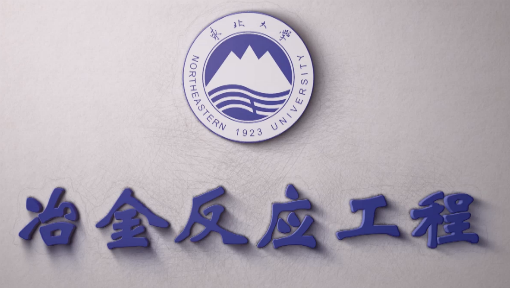
当前课程知识点:Fundamentals of Inorganic Materials Science > 5 Phase equilibrium > 5.3 Applications of one-component diagrams > 5.3 Applications of one-component diagrams
返回《Fundamentals of Inorganic Materials Science》慕课在线视频课程列表
返回《Fundamentals of Inorganic Materials Science》慕课在线视频列表
同学们好
前面我们学习了单元相图的基本相图
这次课
我们来学习单元系统相图的应用
我们将分别介绍SiO2系统相图和ZrO2系统相图
首先看SiO2系统相图的应用
SiO2在工业上应用极为广泛
石英砂是玻璃
陶瓷耐火材料工业的基本原料
SiO2有7种晶型
自然界中存在的是β-石英
加热到573℃就会变成α-石英
870℃下转变为鳞石英
继续加热变为方石英直至熔融
横向石英
鳞石英与方石英之间的转变
称为一级转变或者叫做重建型转变
正如图中所示
此类转变发生时
要打开原有化学键
重新形成新结构
所以转变速度很慢
同系列中αβγ形态之间的转变
称之为二级转变
或位移型转变
高低温型转变
各变体间结构差别不大
转变时不需要打开原有化学键
只是原子发生位移或者Si-O-Si键角稍有变化
转变速度迅速
SiO2发生晶形转变时
伴随体积的变化
从这个表格可以看出
发生一级转变即重建式转变时
α-石英与α-鳞石英之间的体积变化最大
达到16%
二级转变时
方石英的体积变化最大
为2.8%
鳞石英的体积变化最
仅为0.2%
哪一类转变对工业影响大呢
刚才讲了
一级转变体积变化大
但我们应该考虑到一级转变速度慢
而位移型转变虽然体积变化小
但转变速度
所以同类转变对氧化硅制品的危害比较大
了解了上述内容
我们来看SiO2系统相图
相图上虚线表示介稳态
为什么这个相图看上去比较复杂呢
我们刚才讲解了
因为氧化硅有7种晶型
所以左边固相区有6条晶型转变线
th
由于各种介稳状态的出现
相图上不但出现了这些介稳态的饱和蒸气压曲线
还有介稳晶型转变线
对SiO2相图稍加分析可以发现
SiO2所有处于介稳状态的变体的饱和蒸气压
都比在相同温度范围内处于热力学稳定态的变体的饱和蒸气压高
说明介稳态是一种较高的能量状态
它有自发转变为热力学稳定态的趋势
而处于较低能量状态的热力学稳定态
则不可能自发转变为介稳态
在给定温度范围内
具有最小蒸气压的相一定是最稳定的相
而二个相如果处于平衡状态
其蒸气压必定相等
SiO2相图的应用
我们以耐火材料硅砖的生产和使用为例
原料就是天然石英
通过高温煅烧制备硅砖
前面我们已经分析了
希望硅砖中鳞石英含量越多越好
而方石英含量越少越好
实际硅砖的烧结情况是加热至573℃时
β-石英很快转变为α-石英
当加热至870℃不转变为鳞石英
在生产条件下
常过热到1200℃~1350℃直接转变为介稳的α-方石英
针对上述情况
我们就要采取一定的措施
使硅砖制品里有尽量多的鳞石英
而没有石英和方石英
那么采取什么措施呢
首先在870℃适当保温
870℃是鳞石英的生成温度
在此保温
可促使鳞石英生成
还需要在1200~1350℃小心加快升温
这是实际烧制过程中方石英的生成温
我们不希望出现方石英
因而需要快速升温避免方石英的出现
除了温度控制外
我们还可以采取另外一种措施
在配方中适当加入Fe2O3
MnO2 CaO或Ca(OH)2等矿化剂
在1000℃左右产生一定量的液相
我们不希望出现的晶型α-石英
α-方石英
在此液相中的溶解度恰好较大
而我们希望出现的α-鳞石英的溶解度较小
因而α-石英
α-方石英不断溶入液相
而α-鳞石英则不断从液相中析出
下面我们看氧化锆系统相图
首先我们介绍一下ZrO2的用途
ZrO2可以作为特种陶瓷的主要原料
但由于氧化锆晶型转变过程中有体积效应
这样ZrO2制品在烧成过程中容易开裂
无法烧结致密
生产常加适量CaO或Y2O3
在大于1500℃形成立方晶型固溶体
称稳定化立方ZrO2
这样在冷却过程中
固溶体不会发生晶型转变
没有晶型转变就没有体积效应
因而可以避免ZrO2制品的开裂
氧化锆的熔点比较高
可以做耐火材料
向氧化锆中加入氧化钙
可以形成氧空位
利用其导氧导电性能
作氧敏传感器元件
还可以利用体积效应
对其他陶瓷材料进行相变增韧
ZrO2单元系统相图比较简单
比SiO2相图要简单得多
这是由于ZrO2仅有三种晶型
单斜
四方和立方ZrO2
单斜ZrO2加热到1200℃时转变为四方ZrO2
这个转变速度很快
并伴随7%~9%的体积收缩
但在冷却过程中
四方ZrO2 并不在1200℃转变成单斜ZrO2
而是在1000℃左右才发生转变
这是相变滞后现象
在多晶转变中经常可以观察到的
-Test for chapter 1
-2.1 Type of defect
-2.2.1 The expression methods of point defects
--2.2.1 The expression methods of point defects
--2.2.1 The expression methods of point defects
-2.2.2 The rules for writing of defect reaction equation
--2.2.2 The rules for writing of defect reaction equation
--2.2.2 The rules for writing of defect reaction equation
-2.3 Calculation of thermal defect concentration
--2.3 Calculation of thermal defect concentration
--2.3 Calculation of thermal defect concentration
-2.4 Non-stoichiometric compounds
--2.4 Non-stoichiometric compounds
--2.4 Non-stoichiometric compounds
-Homework for chapter 2
-Test for chapter 2
-3.1 The classification of solid solutions
--3.1 The classification of solid solutions
--3.1 The classification of solid solutions
-3.2 Substitutional solid solution
--3.2 Substitutional solid solution
--3.2 Substitutional solid solution
-3.3 Interstitial solid solution
--3.3 Interstitial solid solution
--3.3 Interstitial solid solution
-3.4 The research method of solid solutions
--3.4 The research method of solid solutions
--3.4 The research method of solid solutions
-3.5 Questions for crystal imperfection and solid solution
--Questions for crystal imperfection and solid solution
-Homework for chapter 3
-Test for chapter 3
-4.1 Melt structure
-4.2 The properties of the melt
--4.2.1 The properties of the melt_viscosity
--4.2.2 The properties of the melt_surface tension
--4.2 The properties of the melt
-4.3 The characteristics of glass
--4.3 The characteristics of glass
--4.3 The characteristics of glass
-4.4 The formation of glass
--4.4.1 The formation of glass_kinetics conditions
--4.4.2 The formation of glass_crystal chemical conditions
-4.5 The structure of glass
-4.6 The typical glass
-4.7 Questions for melt and glass
--Questions for melt and glass
-Test for chapter 4
-5.1 Phase equilibrium in silicate systems
--5.1 Phase equilibrium in silicate system
--5.1 Phase equilibrium in silicate system
-5.2 One-component system phase diagram
--5.2 One-component system phase diagram
--5.2 One-component system phase diagram
-5.3 Applications of one-component diagrams
--5.3 Applications of one-component diagrams
--5.3 Applications of one-component diagrams
-5.4 Binary diagrams
--5.4.1 Binary diagram with eutectic point
--5.4.2 Binary system with a congruent melting compound and one with an incongruent melting compound
--5.4.3 Other five types of phase diagrams of binary systems
-5.5 Applications of binary phase diagrams
--5.5 Applications of binary phase diagrams
--5.5 Applications of binary phase diagrams
-5.6 Ternary diagrams
--5.6.1 Representation of ternary system composition
--5.6.1 Representation of ternary system composition
--5.6.2 Three-dimensional state diagram and plane projection diagram of a simple ternary system
--5.6.2 Three-dimensional state diagram and plane projection diagram of a simple ternary system
--5.6.3 (1) Basic types of ternary phase diagrams
--5.6.3 (2) Basic types of ternary phase diagrams
--5.6.3 (3) Basic types of ternary phase diagrams
--5.6.3 Basic types of ternary phase diagrams
-5.7 Applications of ternary phase diagrams
--5.7 Applications of ternary phase diagrams
--5.7 Applications of ternary phase diagrams
-5.8 Research methods of phase equilibrium
--5.8 Research methods of phase equilibrium
--5.8 Research methods of phase equilibrium
-5.9 Questions for phase equilibria
--Questions for phase equilibria
-Homework for chaper 5
-Test for chapter 5
-6.1 Overview of diffusion
-6.2 The kinetic equations of diffusion
--6.2 The kinetic equations of diffusion
--6.2 The kinetic equations of diffusion
-6.3 The thermodynamic equation of diffusion
--6.3 The thermodynamic equation of diffusion
--6.3 The thermodynamic equation of diffusion
-6.4 Diffusion mechanisms and diffusion coefficient
--6.4 Diffusion mechanisms and diffusion coefficient
--6.4 Diffusion mechanisms and diffusion coefficient
-6.5 Diffusion in solid
-6.6 Factors affecting diffusion
--6.6 Factors affecting diffusion
--6.6 Factors affecting diffusion
-6.7 Questions for diffusion
-Homework for chaper 6
-Test for chapter 6
-7.1 Overview of solid state reactions
--7.1 Overview of solid state reactions
--7.1 Overview of solid state reactions
-7.2 Kinetic equation of solid state reaction
--7.2 Kinetic equation of solid state reaction
-7.3 Factors affecting the solid state reaction
--7.3 Factors affecting the solid state reaction
--7.3 Factors affecting the solid state reaction
-Homeword for chapter 7
-8.1 The categories of phase transformation
--8.1 The categories of phase transformation
--8.1 The categories of phase transformation
-8.2 Crystallization
--8.2.1 Crystallization thermodynamics
--8.2.2 Crystallization kinetics
-8.3 Phase Separation of glass
--8.3 Phase separation of glass
--8.3 Phase separation of glass
-8.4 Questions for phase transformation
--Questions for phase transformation
-Test for chapter 8
-9.1 Overview of sintering
-9.2 The driving forces and models of sintering
--9.2 The driving forces and models of sintering
--9.2 The driving forces and models of sintering
-9.3 Solid state sintering
--9.3.1 Evaporation-Condensation mass transfer
--9.3.2 Diffusion mass transfer
-9.4 Liquid phase sintering
--9.4.2 Solution-Precipitation mass transfer
-9.5 Grain growth and secondary recrystallization
--9.5.2 Secondary recrystallization
--9.5 Grain growth and secondary recrystallization
-9.6 Factors affecting sintering
--9.6 Factors affecting sintering
--9.6 Factors affecting sintering
-9.7 Questions for sintering
-Homework for chapter 9
-Test for chapter 9


